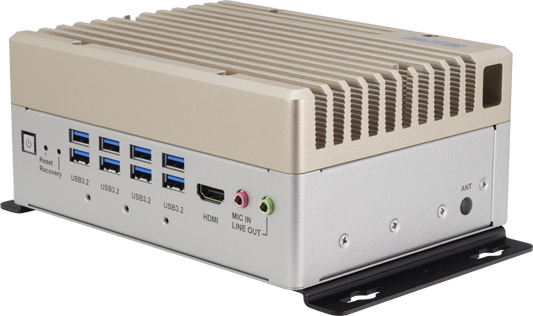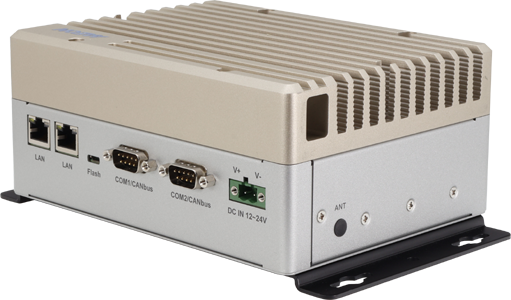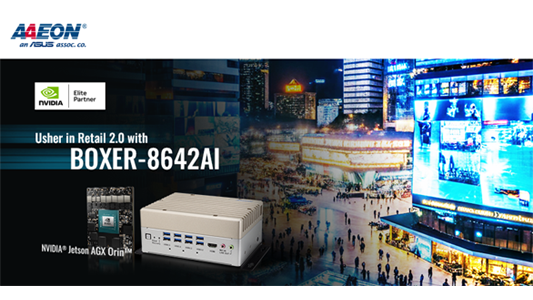Taipei, Taiwan – AAEON Technology Inc. has announced the release of the BOXER-8642AI, a fanless embedded AI computer featuring eight independent 10Gbps USB ports, powered by either a 32GB or 64GB NVIDIA® Jetson AGX Orin™ module.

Built for the smart retail market, the BOXER-8642AI is able to support multiple Intel® RealSense™ D405 3D cameras for high and wide bandwidth image processing to facilitate inferencing tasks conducive to applications such as AI-assisted self-checkout kiosks.

The BOXER-8642AI’s design is suitable for reliable, around-the-clock operation in various retail environments, as indicated by its 12V to 24V power input range and -25°C and 55°C temperature tolerance. Moreover, AAEON claims the device’s standout feature, its selection of 10Gbps USB ports, have been tested to ensure they can withstand continuous on/off cycling while maintaining a drop-rate of less than 0.1%.
Joining its eight 10Gbps USB interfaces are two DB-9 ports, which offer RS-232/422/485(Rx/Tx) signals, along with CANBus FD, with dual Gigabit Ethernet available via RJ-45 ports on the device’s adjacent to its serial ports.
The computer provides adequate storage for intensive applications, with 64GB eMMC 5.1 onboard and a 2.5″ SATA drive bay, while 32GB or 64GB of system memory capacity is available, corresponding to the NVIDIA® Jetson AGX Orin™ module the system SKU hosts.
Wi-Fi or Bluetooth expansion cards are accommodated by the device’s M.2 2230 E-Key, with the BOXER-8642AI’s chassis featuring two antenna openings for the purpose of improving signal range. As has become a staple of AAEON’s NVIDIA-based computers, the BOXER-8642AI comes with two wall mount brackets for modular deployment, and supports the Linux OS, specifically the NVIDIA Jetpack™ software development kit (5.1.2 and above).
For detailed specifications, please visit the BOXER-8642AI product page on the AAEON website. The BOXER-8642AI is also available for order via AAEON’s eShop.
Detailing the project behind the development of the BOXER-8642AI, AAEON has published a case study showing how the system was deployed in a chain of convenience stores, details of which can be found here.












